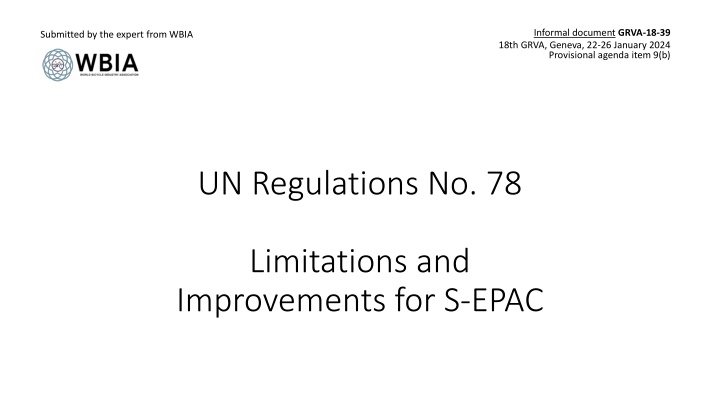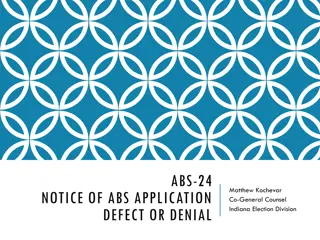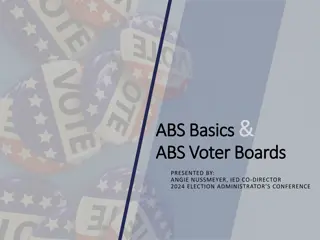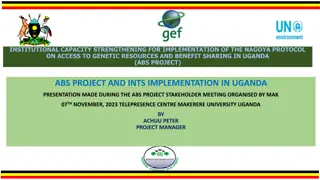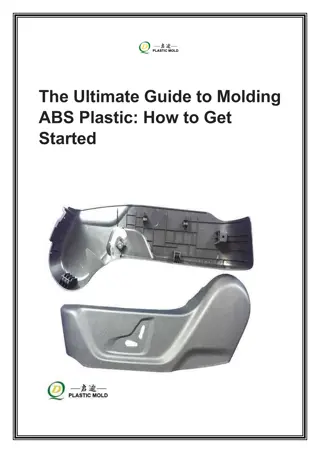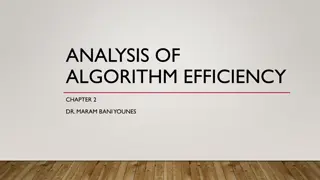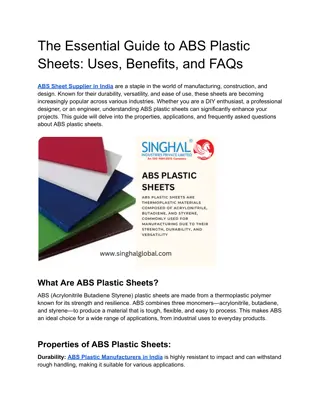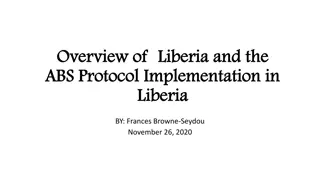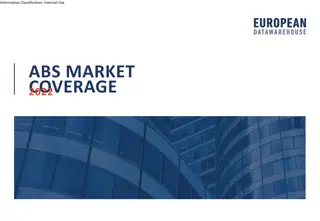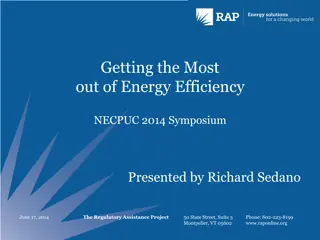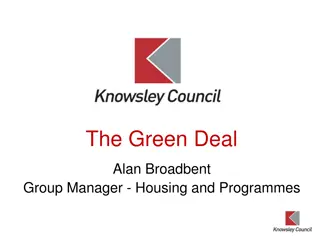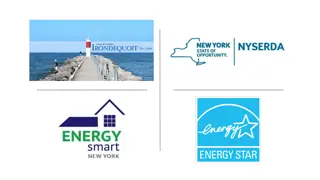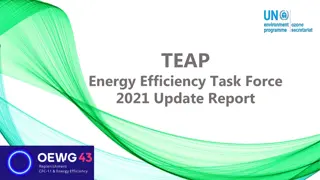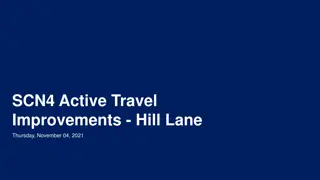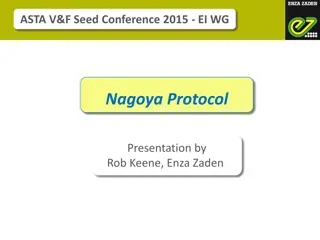Limitations and Improvements for S-EPAC Regarding ABS Efficiency
Proposed changes to the deceleration threshold in UN Regulations No. 78 to better align with the physics of S-EPACs, specifically related to Anti-lock Braking Systems (ABS) efficiency and safety enhancements for electrically powered bicycles in the EU.
Download Presentation

Please find below an Image/Link to download the presentation.
The content on the website is provided AS IS for your information and personal use only. It may not be sold, licensed, or shared on other websites without obtaining consent from the author.If you encounter any issues during the download, it is possible that the publisher has removed the file from their server.
You are allowed to download the files provided on this website for personal or commercial use, subject to the condition that they are used lawfully. All files are the property of their respective owners.
The content on the website is provided AS IS for your information and personal use only. It may not be sold, licensed, or shared on other websites without obtaining consent from the author.
E N D
Presentation Transcript
Informal document GRVA-18-39 18th GRVA, Geneva, 22-26 January 2024 Provisional agenda item 9(b) Submitted by the expert from WBIA UN Regulations No. 78 Limitations and Improvements for S-EPAC
Limitations and Improvements for S-EPAC Definition: EPAC is the acronym for Electrically Power Assisted Cycle, which are non-type approved e-bikes in EU. S-EPAC is considered a pedal-driven vehicle of category L1 with auxiliary electric propulsion, which is a type-approved e-bike in EU Specifically, it is a vehicle of subcategory L1e-B according to (EU) 168/2013) Background: In certain conditions, ABS can offer benefit in terms of cycling safety as it optimizes the trade-off between bicycle stability and deceleration ABS can work only within the physical limits of the bicycle (friction of tire & road, center of gravity of rider & bicycle, etc.) ABS has, as all technical systems, a level of efficiency compared to rider s best performance (pro rider who knows when & how to brake) Applicable standards: ABS is available for both EPAC and S-EPAC,. hence UNECE R78 is mandatory for S-EPAC Current design of the UNECE R78 targets ABS technology on powered two wheelers (PTWs) such as mopeds and motorcycles which have different physical limits (cf. slide 2) Issue: The center of gravity (CoG) of S-EPACs combined with the level of efficiency of every ABS does not fit to the braking test Stops on high friction surface (chapter 9.3) which includes a vehicle independent deceleration threshold of 6.17m/s (cf. slide 2) Proposal: Changing the deceleration threshold definition from a vehicle independent one to a vehicle dependent one as in braking test Stops on low friction surface (chapter 9.4) enables a better fit of UNECE R78 to S-EPACs (cf. slide 3)
A Standard made for Motorcycles and Mopeds Discussion points: The deceleration threshold of 6.17m/s on high friction surface in UN R78 does not fit for bicycles physics (geometry, center of gravity, etc.) Theoretical deceleration for rear wheel lift-up [m/s] 16.35 A brake efficiency of 100% is impossible in comparison to the rider s best values due to the working principle of ABS 11.21 6.24 Passenger car Motorcycle Bicycle An ABS efficiency of 80-90% can be rated as very good and leads to a significant increase of stability and hence safety of the bike Source: O. Maier, M. Pfeiffer, S. Scharpf and J. Wrede, "Conditions for nose-over and front wheel lockup of electric bicycles, doi: 10.1109/MECATRONICS.2016.7547145.
Needed Change Points for S-EPAC Chapter 9.3. Stops on a high friction surface: 9.3.2. Performance requirements Current version Proposal The stopping distance (S) shall be 0.0063V2 (where V is the specified test speed in km/h and S is the required stopping distance in metres) or the MFDD shall be 6.17 m/s2; and a. The stopping distance (S) shall be a.1 in general, 0.0063V2 (where V is the specified test speed in km/h and S is the required stopping distance in metres) or the MFDD shall be 6.17 m/s2; or b. There shall be no wheel lock and the vehicle wheels shall stay within the test lane. a.2 in case of pedal-driven vehicles of category L1 with auxiliary electric propulsion, 0.0056V2/P (where V is the specified test speed in km/h, P is the peak braking coefficient and S is the required stopping distance in metres) or the MFDD shall be 6.87 x P, in m/s2; and b. There shall be no wheel lock and the vehicle wheels shall stay within the test lane. Current phrasing in UN R78 New additions to UN R78 Source: UNECE R78
Exemplary Calculation for 9.3 and 9.4 Proposal: 9.3.2 Performance requirements (Stops on high friction surface) Current version of UNECE R78: 9.4.2 Performance requirements (Stops on low friction surface) The stopping distance (S) shall be The stopping distance (S) shall be 0.0056V2/P (where V is the specified test speed in km/h, P is the peak braking coefficient* and S is the required stopping distance in metres) or the MFDD shall be 6.87 x P, in m/s2; a. a.2 in case of pedal-driven vehicles of category L1 with auxiliary electric propulsion, 0.0056V2/P (where V is the specified test speed in km/h, P is the peak braking coefficient and S is the required stopping distance in metres) or the MFDD shall be 6.87 x P, in m/s2; Calculation example: Calculation example: Calculation of PBC (from arbitrary measurement): Calculation of PBC (from another arbitrary measurement): t = 0.76 s P = 0.566/0.76 = 0.75 t = 1.3 s P = 0.566/1.3 = 0.43 MFDD criteria = 6.87 x 0.75 = 5.15 m/s MFDD criteria = 6.87 x 0.43 = 2.95 m/s Comparison with rider s best deceleration**: rider s best value from same arbitrary measurement: 7.1 m/s Comparison with rider s best deceleration**: rider s best value from same exemplary measurement: 4.0 m/s MFDD criteria / rider s best = 5.15 m/s / 7.1 m/s = 73% MFDD criteria / rider s best = 2.95 m/s / 4.0 m/s = 74% The pass criteria for ABS is 73% of rider s best value The pass criteria for ABS is 74% of rider s best value * Calculation of PBC: The Peak Braking Coefficient (PBC) is calculated from the test stop that generates the maximum vehicle deceleration rate, as follows: PBC = 0.566/t, where t = time taken, in seconds, for the speed of the vehicle to reduce from 0.8 Vmax to (0.8 Vmax 20), where Vmax is measured in km/h Source: UNECE R78 ** rider s best: mean deceleration from 0,8 Vmax to 0,1 Vmax, best out of 10 measurements without ABS to define a criteria close to the physical limit
